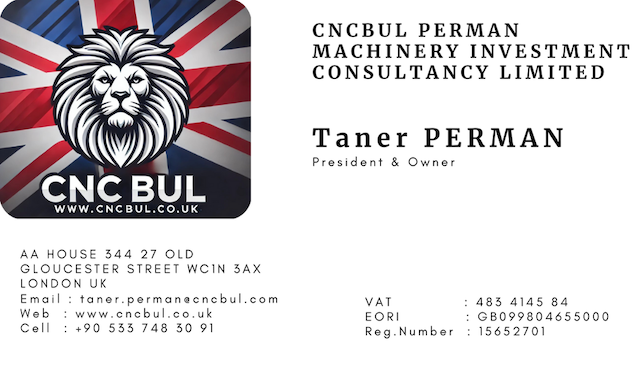CNC operator breaks a lot of cutting tools while working on the CNC machine.How can I prevent this?
Preventing Cutting Tool Breakage in CNC Machining: A Comprehensive Approach
Cutting tool breakage is a common issue in CNC machining that can lead to increased costs, downtime, and compromised part quality. To address this problem, a multifaceted approach is required, focusing on machine setup, tool selection, operational parameters, and operator training. Below, we delve into technical strategies and best practices to prevent cutting tool breakage.
1. Proper Tool Selection and Maintenance
a. Tool Material and Coating
- Material Suitability: Select cutting tools made from materials that match the workpiece material. For example, high-speed steel (HSS) tools are suitable for softer materials, while carbide tools are better for harder materials.
- Coatings: Utilize coated tools (e.g., TiN, TiAlN) to reduce friction, increase hardness, and extend tool life. Coatings can enhance wear resistance and thermal stability.
b. Tool Geometry
- Optimized Tool Geometry: Choose tools with the appropriate geometry for the specific machining operation. Consider factors like rake angle, clearance angle, and helix angle. Proper geometry reduces cutting forces and heat generation.
- Chip Breakers: Use tools with built-in chip breakers to manage chip formation and evacuation, preventing chip clogging and tool breakage.
c. Tool Maintenance
- Regular Inspection: Regularly inspect tools for signs of wear, chipping, or damage. Replace tools before they fail to maintain machining accuracy and prevent breakage.
- Tool Reconditioning: Recondition and regrind tools when possible to restore their cutting edges and prolong their service life.
2. Machine Setup and Calibration
a. Machine Alignment and Calibration
- Precision Setup: Ensure the CNC machine is properly aligned and calibrated. Misalignment can cause uneven cutting forces and tool stress, leading to breakage.
- Fixture and Workholding: Use robust and precise workholding solutions to securely clamp the workpiece. Movement or vibration of the workpiece can increase tool load and risk of breakage.
b. Tool Holder and Collet Condition
- Tool Holder Selection: Use high-quality tool holders that match the tool shank size and type. Poor tool holder quality or improper selection can lead to tool runout and breakage.
- Collet Condition: Regularly inspect collets for wear or damage. Worn collets can lead to poor tool clamping, increasing the risk of breakage.
3. Optimizing Cutting Parameters
a. Feed Rate and Cutting Speed
- Proper Feed Rate: Adjust feed rates according to the material and tool specifications. Excessive feed rates can overload the tool, while too low feed rates can cause rubbing and heat buildup.
- Cutting Speed: Set the appropriate cutting speed for the material and tool type. Higher speeds may improve efficiency but can also increase thermal stress on the tool.
b. Depth of Cut
- Step-Down and Step-Over: Optimize the depth of cut to balance productivity and tool life. Taking too deep a cut can generate excessive forces, while too shallow cuts may not be efficient.
- Incremental Adjustments: Make incremental adjustments to the depth of cut, especially in hard materials or finishing passes, to prevent tool overload.
c. Coolant and Lubrication
- Coolant Application: Ensure adequate coolant flow to the cutting zone to dissipate heat and reduce thermal stress on the tool. Use high-pressure coolant systems for deep or high-speed cutting.
- Lubrication: Use appropriate lubricants to reduce friction and wear on the tool. Proper lubrication improves surface finish and prolongs tool life.
4. Advanced Machining Techniques
a. High-Speed Machining (HSM)
- HSM Strategies: Implement high-speed machining strategies that use higher spindle speeds and lower feed rates. This approach reduces cutting forces and heat generation, preserving tool integrity.
- Dynamic Milling: Use dynamic milling techniques to distribute cutting forces more evenly and reduce tool load. This involves varying the tool path to minimize constant engagement.
b. Adaptive Control Systems
- Load Monitoring: Integrate adaptive control systems that monitor tool load and adjust machining parameters in real-time. These systems can detect excessive forces and adjust feed rates to prevent tool breakage.
- Vibration Monitoring: Use vibration monitoring systems to detect and mitigate chatter, which can cause tool breakage. Adjust spindle speeds and feed rates to avoid resonance frequencies.
5. Operator Training and Best Practices
a. Comprehensive Training
- Basic Training: Provide operators with thorough training on CNC machine operation, tool handling, and safety procedures. Ensure they understand the importance of proper tool selection and maintenance.
- Advanced Training: Offer advanced training on optimizing cutting parameters, using CAM software, and implementing high-speed machining techniques.
b. Standard Operating Procedures (SOPs)
- Documented Procedures: Develop and enforce SOPs for tool setup, machine calibration, and routine maintenance. SOPs help ensure consistency and reduce the risk of operator error.
- Best Practices: Encourage best practices such as gradual ramping up of cutting parameters, regular tool inspections, and proper workpiece clamping.
c. Continuous Improvement
- Feedback Loop: Establish a feedback loop where operators can report issues and suggest improvements. Regularly review and update procedures based on operator feedback and technological advancements.
- Performance Monitoring: Monitor operator performance and provide additional training or support as needed. Use performance metrics to identify areas for improvement.
Conclusion
Preventing cutting tool breakage in CNC machining requires a holistic approach that encompasses proper tool selection and maintenance, optimized machine setup, precise cutting parameters, advanced machining techniques, and comprehensive operator training. By addressing these areas, manufacturers can significantly reduce tool breakage, enhance productivity, and improve the overall quality of machined parts. Implementing these best practices ensures that CNC operations run smoothly and efficiently, maximizing the return on investment in cutting tools and machinery.

